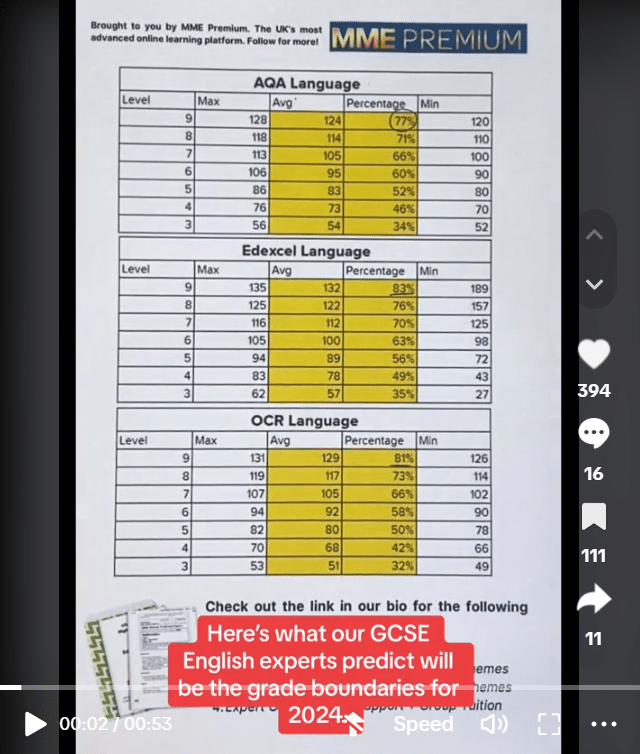Reading Non-Fiction: Meaning in Language
Reading Non-Fiction: Meaning in Language Revision
Meaning in Language
Sometimes, texts can seem complicated at first, especially in a pressurised exam situation.
It can help to know how to read them so that you can find their meaning, and be able to effectively answer the questions on your exam paper.
There are three main factors contributing to the meaning within the language of a text: tone, style and register, and language features.
Tone
Tone is the attitude of the author towards the subject matter, think of it like body language when someone is talking, within the text.
It is not explicitly stated, but there will be clues throughout an author’s work as to what the tone is.
Tone can be found in formality, the word choice and the point of view of the author, so looking into language and structural features more closely when you read is an easy way to narrow down what the tone might be.
Format and Tone
The format – how the text is presented – can give you clues on what the tone might be before you’ve even read the text.
A formal tone could be found in a report and would be further indicated by facts and figures and a lack of contractions.
A letter to a friend would be conversational in tone, something that could be further indicated by exclamation marks or use of slang.
An angry or highly emotive tone might be found in a review or a political campaign leaflet, as the aim of the text is to persuade.
Style and Register
Always remember that style and register come as a pair.
Style is how a text is written, in order to best suit its overall purpose.
For example, if the purpose is to inform then the text may be written in an informative style.
Register is the language used to fit into the style of writing– so a formal or informal register would mean that the language you have chosen conforms to one of these styles.
Formal and informal register are two common registers you may be asked to distinguish between.
A formal register would include things like a lack of contractions, use of standard English and more sophisticated word choice.
An informal register would include things like colloquialisms and slang, more liberal use of punctuation.
Language Features
Once you have worked out the tone, you can identify the features that add to it – there are features commonly associated with certain tones or styles to make your analysis more sophisticated.
Example:
“Hey! It’s been absolutely ages since we caught up, how’ve you been?“
The colloquial greeting here, as well as the casual turn of phrase and alliteration is all used to emphasise the point within the sentence.
Some questions to ask yourself when reading through the text and looking for language features:
- Are there any words that create interesting sounds, caused by alliteration, assonance (repeated vowel sounds) or interjections within dialogue?
- Are there patterns within the entire text? What about repetitions?
This could be either a persuasive device or a device to advise and emphasise the reader of something.
- Can you spot figurative language like similes, metaphors or analogy?
While this may be less common in non-fiction texts, this language could still be used emotively in order to persuade the reader of a point.
- What is their effect on the reader?
How is the reader meant to feel after reading? What does the writer hope to achieve in general?
This can be a good way to focus your language analysis further.
- How do the language features contribute to the overall tone?
Combining your Knowledge to Create a Cohesive Picture…
It’s important to vary the explanations you write in your answer, and recognise a wide range of language techniques as well as the tone of the text you are analysing.
You can combine these two elements to strengthen your overall argument and show the examiner you have a good understanding, not only of the text in front of you, but of how best to analyse texts properly.
For example:
Formal language might be used in order to inform, standard english is used to avoid any misunderstanding, and a structural feature like bullet points is used to organise information effectively.
Analysing language and structural features separately is important too, as showing the examiner that you can distinguish between the two is high mark skill.
Examples: Tone
‘Despite my many fruitless attempts to diffuse the situation, the defendant continues to be disruptive’
Through the use of sophisticated language such as ‘fruitless’, the writer creates an exasperated, but formal tone.

‘She walked towards the door’
vs
‘Slowly, carefully, she crept towards the door’
Here you can see how subtle word choice can change the tone of the entire sentence.
Using repeated adverbs which have a similar meaning (‘slowly’ and ‘carefully’) creates tension, and puts the reader on edge by suggesting there is something to be afraid of.

‘Oh really. You missed the train because you were stuck in traffic? A likely story!’
Punctuation such as an exclamation mark and language use such as a rhetorical question is used here to create an incredulous, sarcastic tone.
‘I just can’t believe you would ever have done this!’
Exclamation marks, as well as an emotive tone, emphasises how deeply the emotion is being felt even further.
‘The majority of students are achieving grades of 70% or higher’
Facts and figures can be used to create a formal tone, and strengthens the writer’s argument.
‘It is my recommendation that you increase your security by a minimum of 3 extra workers’
Here, a lack of contractions such as ‘it is’ creates a more serious tone, as well as the short sentence for impact.



